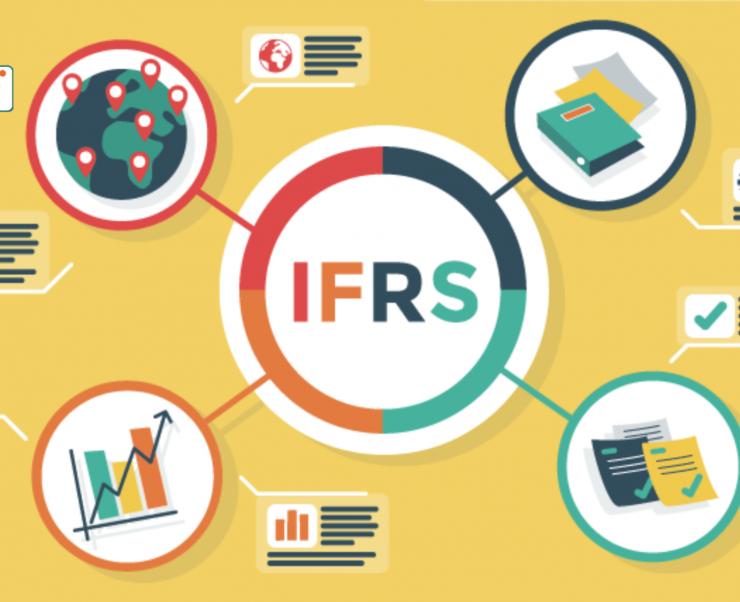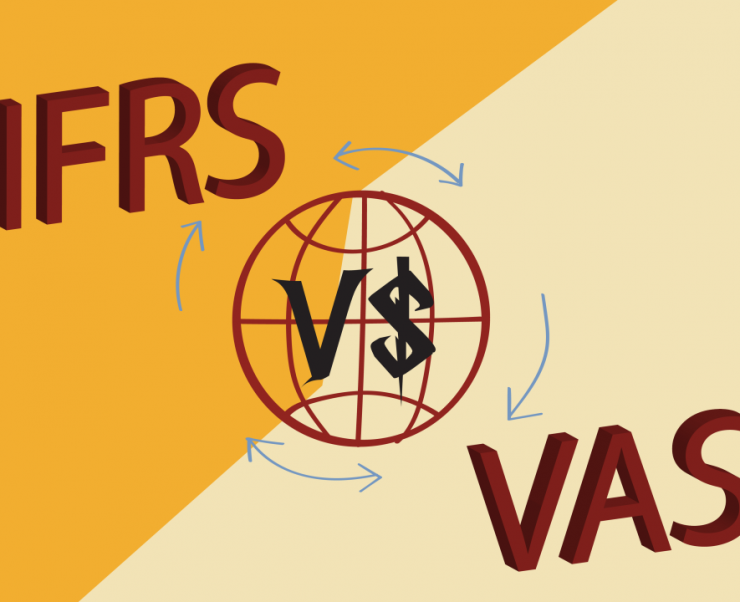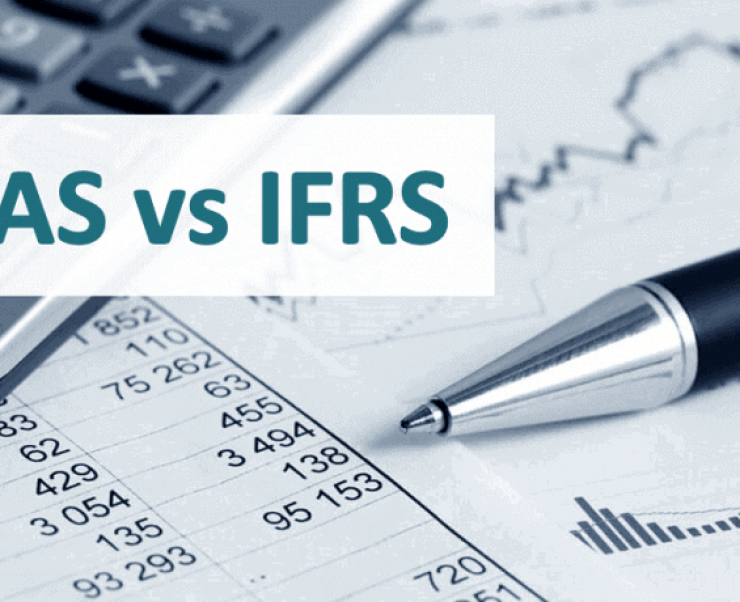
News
Differences Between VAS and IFRS – Part 2
In Part 2 of the Compilation of Differences Between VAS and IFRS, we will continue exploring other significant variations between VAS and IFRS, particularly concerning Financial Reporting Presentation, Business Combinations, Accounting for Investments in Associates/Joint Ventures, and Accounting for Investments in Subsidiaries. Join us in this article, in collaboration with Viet Uc Auditing, to delve into the details!
1. Standards for Financial Reporting Presentation (VAS 21 and IAS 1)
VAS 21, the Presentation of Financial Statements, is built on a previous version of IAS 1. Notably, VAS 21 differs significantly from the current version of IAS 1 regarding the presentation of total income, defined by IAS 1 as the amount that increases the owner's equity, excluding investments by shareholders. From this perspective, IAS 1 specifies two main types of income:
(a) Income arising from business operations and other activities of the enterprise, recorded in the income statement, such as sales revenue, service provision, income from financial activities, and other income (such as gains from disposal, sale of fixed assets, etc.).
(b) Income not arising from business operations primarily determined by the enterprise based on revaluation of certain assets, directly recorded in equity. Examples include changes in fair value surpluses, gains and losses recorded in employee benefit programs with specified benefits, gains and losses from foreign currency translation of financial statements, gains and losses from revaluing financial assets available for sale, and the effective portion of gains and losses of cash flow hedging instruments.

IAS 1 requires the presentation of the income types mentioned in (b) in a new report called "Other Comprehensive Income" to provide additional information to financial statement users about changes in equity unrelated to the business results of the enterprise for the period.
IAS 1 allows companies to choose between two methods of presenting the comprehensive income statement:
(i) Presenting a combined report consisting of Part 1 – Profit/Loss Statement and Part 2 – Other Comprehensive Income Statement, or
(ii) Presenting separate and independent Profit/Loss and Other Comprehensive Income statements.
VAS 21 does not address these issues related to the comprehensive income statement.
2. Standards for Business Combinations (VAS 11 and IFRS 3)
2.1. Treatment of transaction fees in multi-stage business combinations
According to VAS 11, determining transaction fees in multi-stage business combinations involves calculating the total fees from each exchange without updating them to fair value at the control date (acquisition date or date of completing the business combination).
In practice, this approach may not fully reflect information about the business combination fees since fees from previous acquisitions may differ significantly from fees at the control date. This discrepancy may result in delayed recognition of the difference in the income statement.
2.2. Valuation method and recognition of impairment of goodwill
Regarding the recognition and valuation of goodwill: Under VAS 11, goodwill is applied to a portion of the parent company's ownership (Part Goodwill), while IFRS 3 allows the choice of recognizing goodwill for both controlling and non-controlling shareholders (Full Goodwill), in addition to recognizing goodwill related only to the parent company's ownership.
Determining impairment of goodwill: VAS 11 states that allocating goodwill over a maximum of 10 years is a technically advanced approach. However, in essence, this method may not fully reflect factors such as management competence, reputation, and brand value, which may not be diminished after the transaction. Therefore, IFRS 3 does not allow the allocation of goodwill in this manner and requires an annual assessment of impairment of goodwill.
3. Standards for Investments in Associates and Joint Ventures (VAS 07, VAS 08, IAS 28, IFRS 11, IFRS 12)
3.1. Scope of applying the equity method
According to IAS 27 – Separate Financial Statements, the equity method can be applied to both separate financial statements of the parent company and the individual financial statements of independent entities.
In Vietnam, VAS 07, issued 15 years ago, applies the equity method only to consolidated financial statements. Meanwhile, the separate financial statements of entities continue to apply the cost method.

The equity method provides more useful information than the cost method and is also consistent with the Enterprise Law. It requires presenting the investment value corresponding to the investor's net assets in joint ventures and associates on the investor's statement of financial position. Thus, the equity method allows for an immediate reflection of the impact of the joint venture's or associate's business results on the investor during the period and accurately assesses the real effectiveness of investments (while the cost method cannot achieve this).
3.2. Recognition of losses
According to IFRS, investors must recognize losses from the impairment of net investment value (excluding the usual losses of joint ventures or associates) following the provisions of IAS 36. However, in Vietnam, this is done through the application of provisions on financial investment reserves.
An important note is that the provisions on financial investment reserves in Vietnam (according to Circular 228 and Circular 89) differ significantly from IFRS regulations.
4. Standards for Consolidated Financial Reporting and Accounting for Investments in Subsidiaries (VAS 25 and IFRS 10)
4.1. Criteria for determining control
In practice, determining control is quite complex, with many cases where it is challenging to determine if one party has control over another. Therefore, IFRS 10 introduces additional criteria to clarify control, which VAS 25 does not address, including:
4.1.1. Power over the investee
The investor has control over the investee when the investor has the right to direct the activities that significantly affect the investee's returns. The investor has control even when it has not exercised this right. Indicators that the investor has directed the activities may indicate whether the investor has control. If there are no indicators, it can be concluded that the investor does not have control.
If two or more investors have control over the activities independently, then the investor capable of controlling the most significant activity affecting the investee's returns has control. An investor can also have control even when other entities have rights to participate in activities related to the investee, such as when another entity has a significant impact. However, an investor with protective rights alone will not have control over the investee.
4.1.2. Rights to variable returns
The investor has, or has the right to, receive variable returns from its involvement with the investee when the investor's returns are variable depending on the results of the investee's activities.
4.1.3. Relationship between power and variable returns
The investor controls the investee if the investor not only has power over the investee but also has the ability to use its power to affect the investor's returns from the involvement with the investee.

4.2. Treatment of non-controlling interests
According to IFRS 10, the presentation of non-controlling interests is placed in a separate section of equity. However, VAS 25 requires that non-controlling interests be presented outside the equity section. In reality, non-controlling shareholders still play a role as shareholders of the subsidiary and are part of the group. Therefore, the entire ownership of the shareholders needs to be recorded as part of equity. This provision in VAS 25 is not in line with current international standards and practices.
VAS 25 also stipulates that if losses exceed the non-controlling shareholder's share in the subsidiary's net assets' net book value, the loss will be attributed to the parent company's shareholders. This implies that non-controlling shareholders' interests on the consolidated balance sheet will always be positive, unless these shareholders voluntarily accept responsibility for the parent company, as they were not previously part of the equity. However, the current view is that non-controlling shareholders are considered part of equity, so, according to legal regulations, all shareholders share responsibility for benefits and losses corresponding to their ownership portion, without distinguishing between controlling and non-controlling shareholders. Therefore, the provision in VAS 25 is not appropriate.
This comprehensive comparison highlights the critical differences between VAS and IFRS in Financial Reporting Presentation, Business Combinations, Accounting for Investments in Associates/Joint Ventures, and Accounting for Investments in Subsidiaries. Stay tuned for further insights in upcoming articles!















